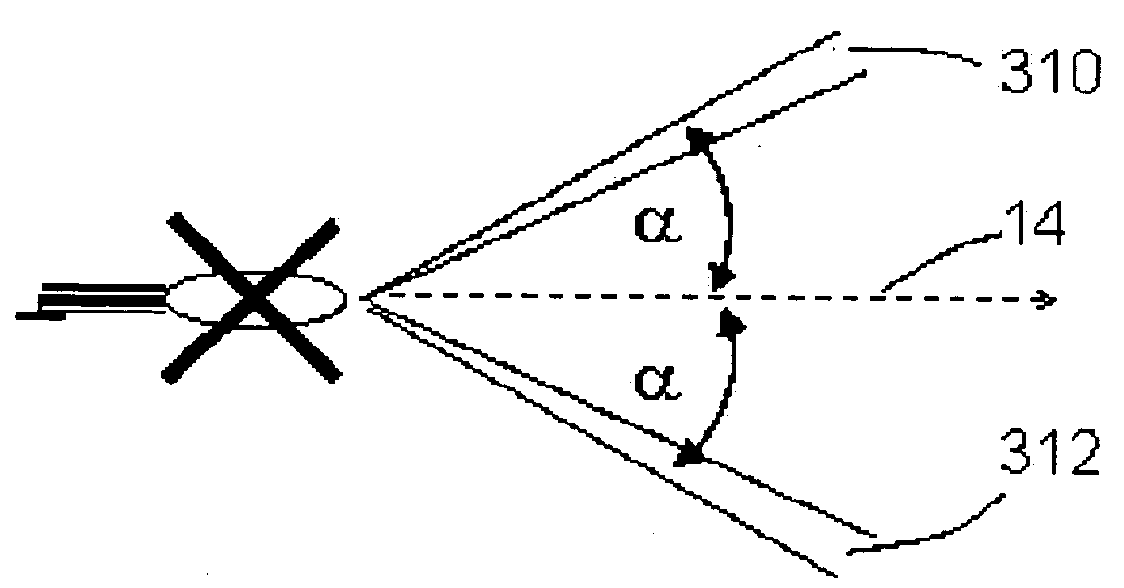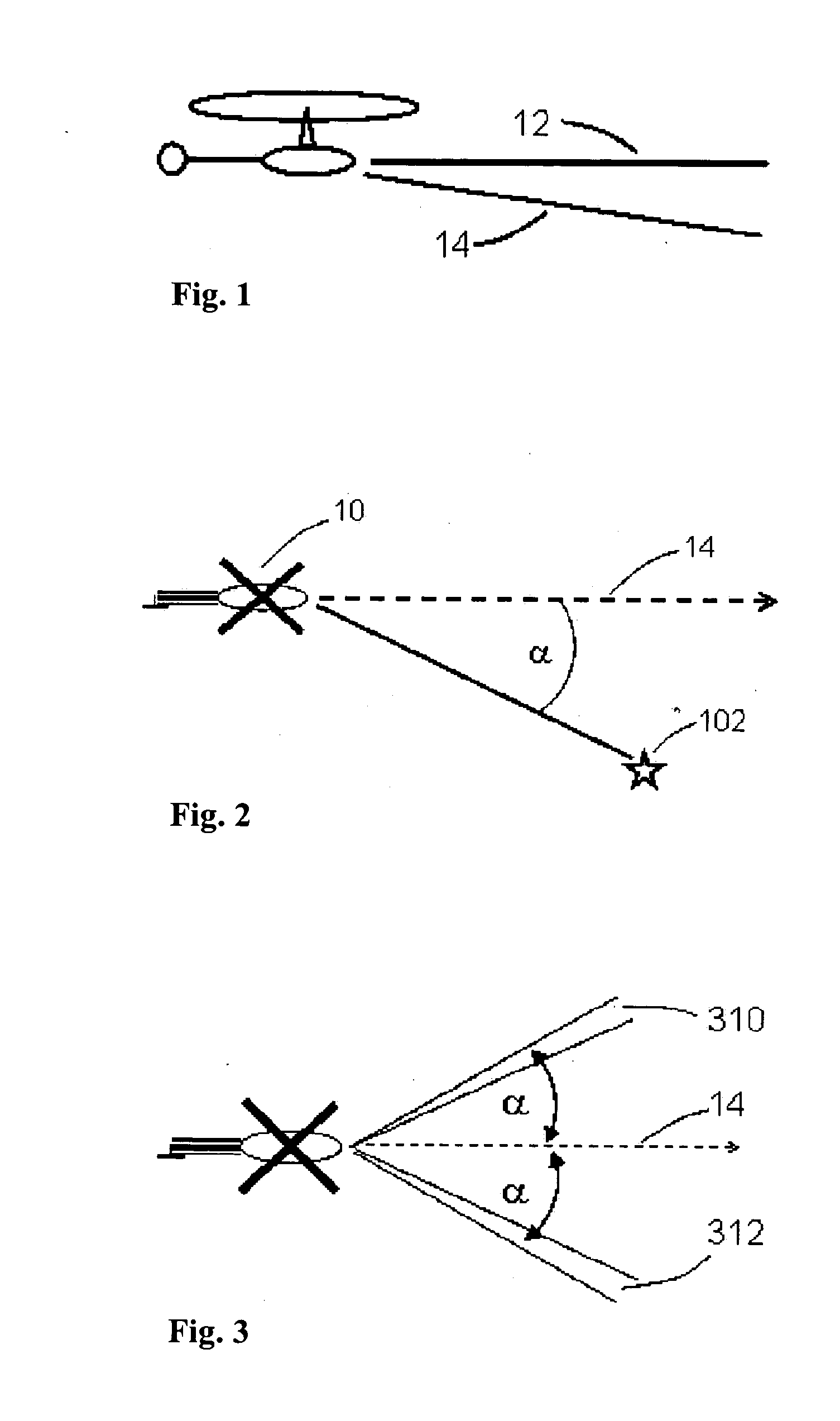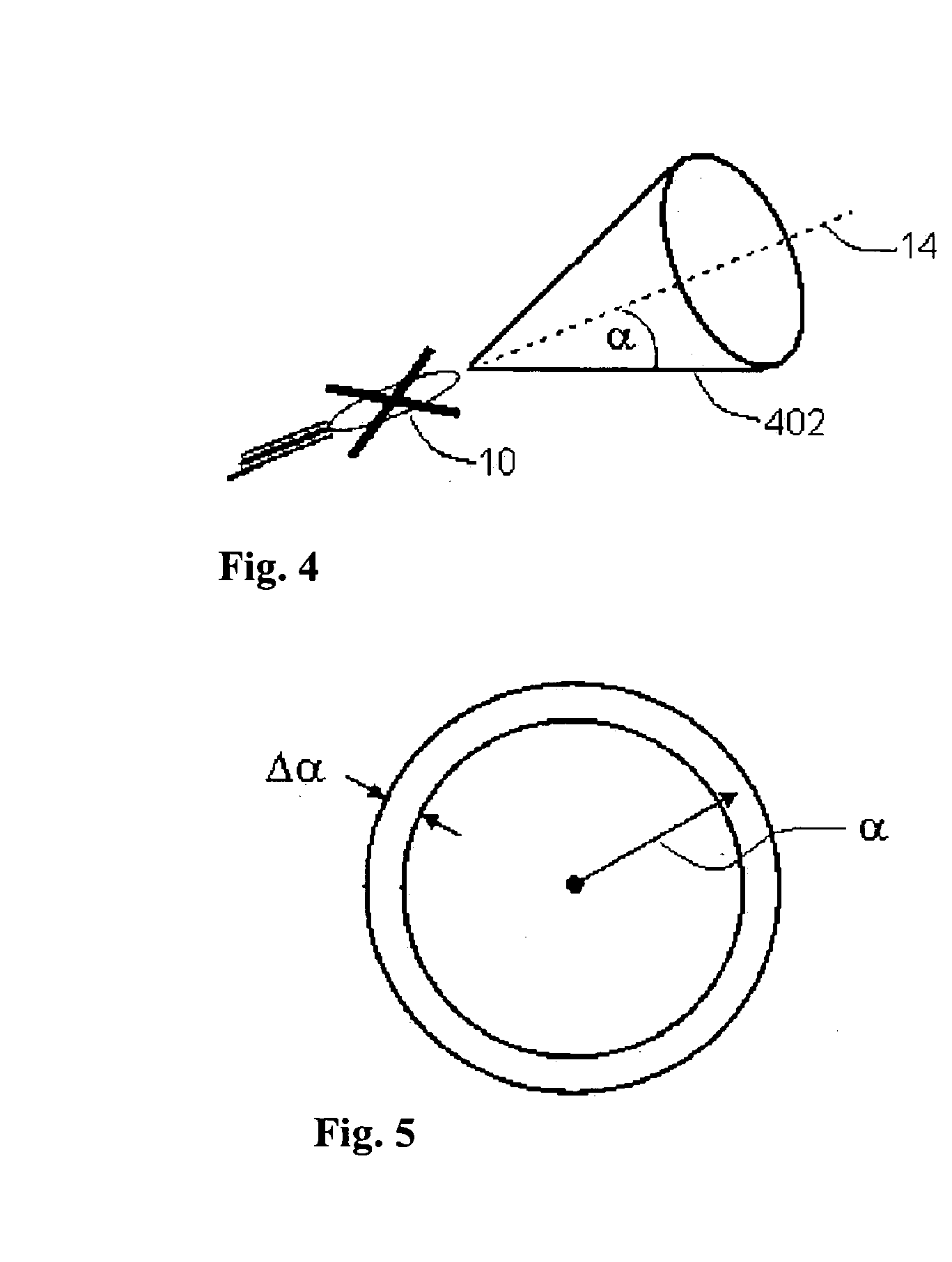Obstacle and terrain avoidance sensor
a technology of obstacle and terrain avoidance and sensor, which is applied in the direction of measuring devices, using reradiation, instruments, etc., can solve the problems of large percentage of severe and fatal helicopter and other aircraft accidents, reliance on gps or a comparable navigation system, and may not always be available, so as to improve accuracy, improve accuracy, and improve accuracy
- Summary
- Abstract
- Description
- Claims
- Application Information
AI Technical Summary
Benefits of technology
Problems solved by technology
Method used
Image
Examples
Embodiment Construction
[0149] Doppler Processing
[0150] FIG. 1 shows an airborne vehicle 10, such as a helicopter moving in a direction shown by Line of Flight (LOF) 12, at a velocity V.sub.g. The Doppler shift, f.sub.d of the reflection of a terrain element 102 in an airborne radar is proportional to the cosine of .alpha., the angle between the LOF and the terrain element and is equal to:
f.sub.d=(2v.sub.g cos .alpha.) / .lambda. (Eq. 1)
[0151] where .lambda. is the wavelength of the radar irradiation.
[0152] If vehicle 10 flies at a very low altitude over horizontal, flat terrain, then spectrum analysis of the signal received effectively divides the sector of terrain covered by the radar into many narrow sectors, where each portion of Doppler spectrum represents two terrain sectors, symmetrically located about the LOF. Two such sectors 310 and 312 are shown in FIG. 3.
[0153] This principle, known as Doppler beam sharpening (DBS) is applicable not only to a horizontal plane, but to any plane containing the LOF,...
PUM
 Login to View More
Login to View More Abstract
Description
Claims
Application Information
 Login to View More
Login to View More - R&D
- Intellectual Property
- Life Sciences
- Materials
- Tech Scout
- Unparalleled Data Quality
- Higher Quality Content
- 60% Fewer Hallucinations
Browse by: Latest US Patents, China's latest patents, Technical Efficacy Thesaurus, Application Domain, Technology Topic, Popular Technical Reports.
© 2025 PatSnap. All rights reserved.Legal|Privacy policy|Modern Slavery Act Transparency Statement|Sitemap|About US| Contact US: help@patsnap.com



